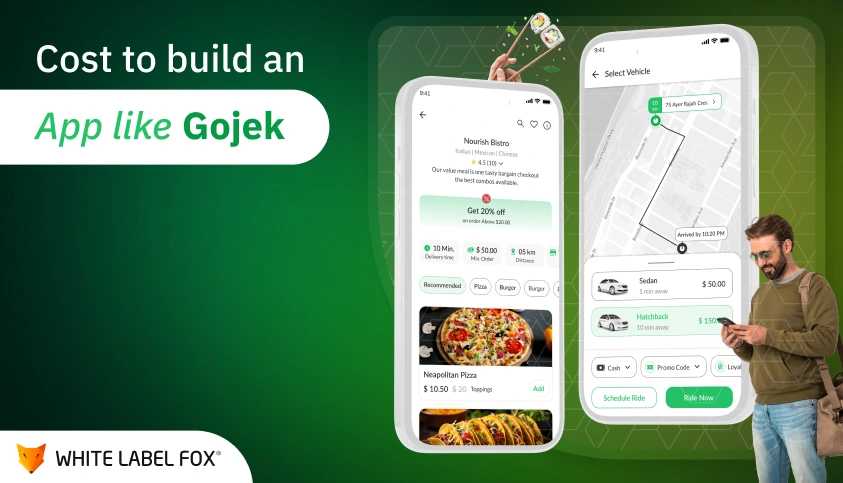When mobile app design has evolved through time, changing digital landscapes have given UX as the key to successful app development. Why? Because good UX design is not merely niceness; it starts with an app’s usability and user satisfaction profile-even its profitability. This article discusses why UX is the central point of successful mobile apps, how it affects user retention, and where improvement actually lies in practical terms for developers to create memorable and effective digital experiences.
What is User Experience in Mobile App Design?
UX encompasses the totality of the experiences users have with an app: everything from navigation flow and visual elements to responsiveness and accessibility. Unlike traditional software where users may have leeway to “figure things out” mobile users expect ease, speed, and efficiency. Users will not think twice about removing an app in favor of another if it is unwieldy, sluggish, or difficult to use. The user is at the center of the development process when UX design is done well.
Effective UX design places the user at the very core of the development process. Care about their needs, behaviors, and pain points—make full use of every well-designed mobile application that is visually appealing, highly functional, and intuitive.
Why UX is Crucial for Mobile App Success
A successful mobile application doesn’t just involve the delivery of a service or entertainment but does so in service provision through a smooth experience that will meet user needs frictionlessly. So, why is UX so crucial to the success of mobile applications? Here are only a few reasons:
1. User Retention and Engagement
Poor UX is one of the primary reasons users abandon apps after the first use. An effective UX, on the other hand, fosters engagement, increasing the chances that users will return. For instance, consider apps like Instagram or TikTok, where users can intuitively explore content, scroll effortlessly, and navigate features with ease. Good UX keeps users coming back, resulting in higher retention rates and increased app popularity.
2. Increased Conversion Rates
It ensures better conversion rates, since such a design will create clear direction where the users should head. A user will find it easy to execute their end goals with an intuitive application—be it signing up for a newsletter, purchase completion, or booking an appointment. At the same time, if the layout is confusing, with some buttons hidden or even the speed at which an app loads, it may frustrate users and prevent their conversion.
3. Brand Loyalty and Reputation
Apps with great UX build positive brand experiences, which lead to more loyal users. Knowing an app they enjoy and can rely on gives people the desire to recommend the app to others and helps increase organic growth. Great UX says a lot about the commitment to quality from the brand, which may bring up a sense of trust and credibility of an app to differ from its competitors.
4. Optimized Functionality Across Devices
Mobile devices take many shapes and forms, so applications have to adjust accordingly in order to support different screen resolutions, orientations, or hardware features. Good UX design means the functionality and visual appearance of an application will look the same on any device. Such flexibility certainly guarantees cross-device compatibility, influencing user satisfaction directly.
Ready to Enhance Your Mobile App’s User Experience?
Improve Your App’s User Experience Today!

Key Elements of Great Mobile App UX Design
To create an effective mobile app, developers and designers should focus on several key elements that impact UX. Let’s break down some core principles:
1. User-Centered Interface Design
Designing for the user simply means designing an interface that is simple, functional, and fun. That’s why, in UX design, minimalism is a complete yes-it includes only those features which a user wants, not something redundant. In this way, users keep their focus on the task with no diversion.
2. Intuitive Navigation
Good navigation is some kind of roadmap for users. Provide that users will be able to find what they need fast and never get lost. Crystal-clear menu structure, breadcrumb navigation, and well-recognizable icons make the interaction more seamless and improve the user experience.
3. Responsive and Fast Loading
Speed is paramount in mobile app UX. Users have little patience for apps that load slowly or respond sluggishly. Optimize your application for speed by compressing images, having efficient code, and using tools to reduce the loading time. Responsive design ensures that the app lies properly on different devices and screen sizes.
4. Visual Appeal and Branding
The looks of an aesthetically pleasing app are way more than good to look at; they tell a lot about the brand itself. Colors, typography, and imagery—all consistent with brand guidelines—create familiarity and reiterate a brand’s messaging. It needs to make sure that it lets the visual design complement its function, not overpower.
5. Security and Privacy
With the rise in digital data privacy concerns, today’s user is getting increasingly sensitive toward data security. Explain precisely how the user data is being stored and secured, and ask for no more than absolutely needed permissions regarding data access. Secure and transparent UX creates trust for the user and lets him continue with the app with no catches.
The Role of Proxies in Improving UX
Proxies might be the ignored cousins when discussions occur around UX, but they form the bedrock of how one optimizes performance and security for an app. In apps that deal with millions of records of processing data or sensitive user information, proxies ensure that everything works seamlessly by optimizing speed, security, and access.
For example, SOCKS5 proxies can improve UX by providing a faster, more secure browsing experience. SOCKS5 proxies work by handling all types of traffic, optimizing connections for various online services. This is especially useful for apps that need secure connections, like banking or shopping apps, where security and privacy are critical to UX. You can find more details here of proxy servers
Future Trends in Mobile App UX Design
UX design is constantly evolving to meet user expectations. Here are a few trends likely to shape the future of mobile app UX:
1. Voice User Interface (VUI)
With the rise in voice search, VUI now features in many applications where users give voice commands to navigate. This adds convenience for most busy users and physically challenged ones, thus making applications inclusive.
2. Augmented Reality (AR)
AR opens new avenues for interactive UX, majorly within e-commerce and gaming. Allowing users an immersive experience of digital information overlaid on the real world, AR increases engagement.
3. AI-Driven Personalization
Artificial Intelligence allows apps to provide very personalized experiences through the analysis of user data and preferences. AI-driven personalization, whether through relevant content recommendations or navigation optimization based on user behavior, is very interesting from a UX point of view.
Conclusion
The most vital part of designing mobile applications is user experience. Well-implanted UX ushers in the success of an app since it shapes perception, engendering better engagement and loyalty. All of these are aspects of a great UX: intuitive navigation, seamless functionality, or responsive design; each contributes to user satisfaction and positions an app for long-term success.
In this ever-changing world of mobile technologies, great UX will also always be produced in a changeable way. If you’re looking to enhance your app’s user experience with ease and efficiency, White Label Fox offers tailored solutions to help you design apps that meet your users’ needs and stand out in the market. The developer has to notice the emerging trends, and by changing the user preferences, he should keep designs applicable, interesting, and high-performing. Focusing on UX will enable designers to actually build apps that would truly shine and make a real difference in today’s competitive mobile landscape.
Whether you are developing a completely new application or upgrading any existing one, only a fine user experience can help one build a mobile application that engages users and provides them with an enriching experience.
Frequently Ask Questions
User Experience (UX) in mobile app design refers to the overall
experience a user has while interacting with an app. It includes all
aspects of the user's interaction with the app, such as ease of use,
intuitive navigation, responsiveness, and visual appeal. A good UX
design ensures that users can perform tasks effortlessly and efficiently
while enjoying a seamless experience.
User experience is critical in mobile app design because it directly
impacts user satisfaction and retention. A well-designed UX ensures that
users can navigate the app without frustration, which leads to higher
engagement, fewer uninstalls, and positive reviews. Poor UX can result
in users abandoning the app, which ultimately affects the app's success.
The key elements of UX in mobile app design include:
- Usability: The ease with which users can
interact with the app.
- Visual Design: The aesthetics of the app,
including color schemes, typography, and imagery.
- Performance: How well the app performs in terms
of speed, responsiveness, and reliability.
- Navigation: How easily users can move between
different sections or features of the app.
- Feedback and Interactivity: Providing users
with clear feedback on actions, such as pressing buttons or
submitting forms.
- Usability: The ease with which users can interact with the app.
- Visual Design: The aesthetics of the app, including color schemes, typography, and imagery.
- Performance: How well the app performs in terms of speed, responsiveness, and reliability.
- Navigation: How easily users can move between different sections or features of the app.
- Feedback and Interactivity: Providing users with clear feedback on actions, such as pressing buttons or submitting forms.
A good UX design plays a significant role in improving app retention.
When users find an app easy to use and visually appealing, they are more
likely to keep using it. On the other hand, apps with poor navigation,
slow performance, or confusing interfaces tend to be uninstalled
quickly. A positive UX experience creates a sense of trust and
satisfaction, encouraging users to continue using the app.
Common UX design mistakes to avoid include:
- Overcomplicated Navigation: A complex
navigation structure that makes it hard for users to find what
they need.
- Slow Loading Times: Apps that take too long to
load or respond negatively affect the user experience.
- Cluttered Interface: Overloading the screen
with too much information, making it difficult for users to
focus on key tasks.
- Inconsistent Design: Using different styles,
fonts, or colors throughout the app can confuse users and break
the flow of the experience.
- Ignoring Accessibility: Failing to make the app
accessible to all users, including those with disabilities, can
negatively impact user experience.
- Overcomplicated Navigation: A complex navigation structure that makes it hard for users to find what they need.
- Slow Loading Times: Apps that take too long to load or respond negatively affect the user experience.
- Cluttered Interface: Overloading the screen with too much information, making it difficult for users to focus on key tasks.
- Inconsistent Design: Using different styles, fonts, or colors throughout the app can confuse users and break the flow of the experience.
- Ignoring Accessibility: Failing to make the app accessible to all users, including those with disabilities, can negatively impact user experience.
User feedback is a vital source of information for improving UX. By
collecting feedback through surveys, ratings, reviews, or in-app
feedback tools, developers can identify pain points, unmet needs, and
areas for improvement. This feedback helps designers refine features,
fix usability issues, and enhance the overall user experience, ensuring
the app remains user-centric.
Mobile app performance is crucial for a positive user experience. Slow
loading times, crashes, or lagging animations can frustrate users and
lead to poor reviews or app abandonment. Ensuring the app is optimized
for speed and stability contributes to a smoother, more enjoyable
experience. Good performance helps maintain user satisfaction and
engagement.
UX design needs to account for the differences in the guidelines and
expectations of iOS and Android platforms. iOS apps typically follow the
Human Interface Guidelines (HIG), while Android apps adhere to the
Material Design principles. Although the core UX principles are similar,
each platform has its own conventions regarding navigation, icons, and
interactions, which must be considered to ensure a consistent and native
experience for users on both platforms.
A positive UX design can directly influence app monetization strategies.
Users are more likely to make in-app purchases, view ads, or subscribe
to premium features if they enjoy using the app and find it easy to
navigate. A well-designed UX can reduce barriers to payment and make it
easier for users to engage with monetized features, leading to better
conversion rates.
Best practices for optimizing UX in mobile app design include:
- Keep it Simple: Prioritize simplicity in design
and navigation to avoid overwhelming users.
- Ensure Fast Load Times: Optimize the app for
performance to ensure quick loading and smooth interactions.
- Focus on Accessibility: Design for users with
varying abilities, ensuring your app is usable by all.
- Test and Iterate: Continuously test the app
with real users to gather feedback and make improvements.
- Consistency: Maintain a consistent design
language throughout the app to provide a cohesive user
experience.
- Keep it Simple: Prioritize simplicity in design and navigation to avoid overwhelming users.
- Ensure Fast Load Times: Optimize the app for performance to ensure quick loading and smooth interactions.
- Focus on Accessibility: Design for users with varying abilities, ensuring your app is usable by all.
- Test and Iterate: Continuously test the app with real users to gather feedback and make improvements.
- Consistency: Maintain a consistent design language throughout the app to provide a cohesive user experience.

















